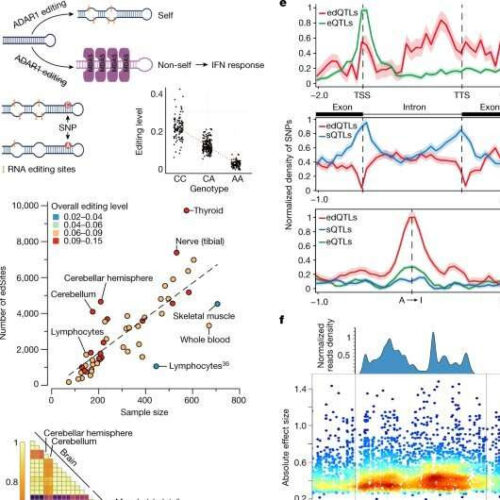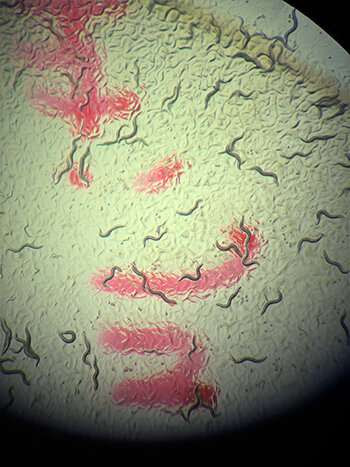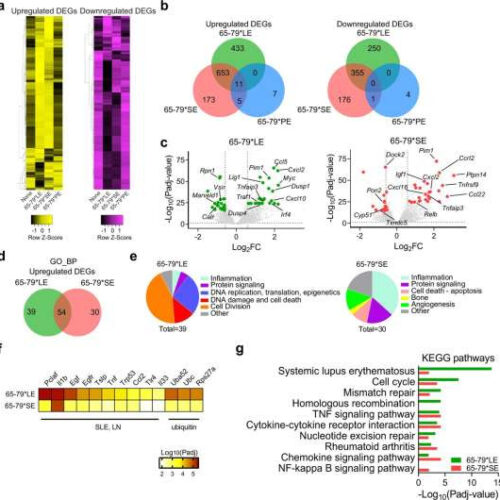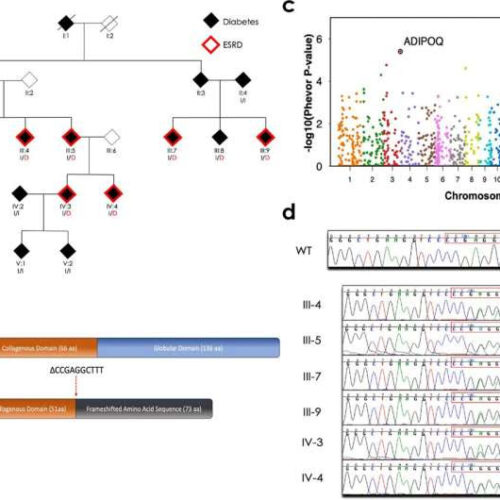by University of California, Los Angeles Credit: Unsplash/CC0 Public Domain A new UCLA-led study has identified multiple new risk genes for Alzheimer’s disease and a rare, related brain disorder called progressive supranuclear palsy (PSP) by using a combination of new testing methods allowing for mass screening of genetic variants in a single experiment. The study, published...
Category: <span>Genetics</span>
Genetic variants that dampen A-to-I RNA editing associated with increased risk of autoimmune disorders
by Bob Yirka , Medical Xpress RNA edQTL map in human tissues. Credit: Nature (2022). DOI: 10.1038/s41586-022-05052-x A team of researchers at Stanford University, working with two colleagues from Fudan University and another from the Broad Institute of MIT and Harvard, has found evidence suggesting that genetic variants that dampen A-to-I RNA editing can be associated with...
Study identifies new dementia risk genes through novel testing approach
UNIVERSITY OF CALIFORNIA – LOS ANGELES HEALTH SCIENCES LOS ANGELES – A new UCLA-led study has identified multiple new risk genes for Alzheimer’s disease and a rare, related brain disorder called progressive supranuclear palsy (PSP) by using a combination of new testing methods allowing for mass screening of genetic variants in a single experiment. The study,...
60 new autism genes identified
COLUMBIA UNIVERSITY IRVING MEDICAL CENTER AUG. 18, 2022–A new study led by Columbia researchers has uncovered 60 genes linked to autism spectrum disorder (ASD) that may provide important clues to the causes of autism across the full spectrum of the disorder. “Overall, the genes we found may represent a different class of genes that are...
Study: Opioid drug tolerance develops from interplay of key gene and cholesterol
by Stacey DeLoye, University of Florida An “unbiased” screen for genes involved in opioid tolerance relied upon tiny worms called C. elegans. The worm genetics revealed PTCHD1 plays a key role, altering cholesterol in cell membranes. Credit: Scott Wiseman for UF Scripps Biomedical Research. UF Scripps Biomedical Research scientists have a discovered a key gene that...
Researchers identify new disorder of copper metabolism, caused by variants in CTR1 gene
by Nationwide Children’s Hospital Credit: Pixabay/CC0 Public Domain Copper is essential for many cellular functions, including cellular respiration, antioxidant defense, neurotransmitter biosynthesis and neuropeptide amidation, among others. Until recently, only two inborn errors of copper metabolism were well established. Both are rare. Wilson’s disease and Menkes disease result from mutations in the copper-transporting P-type ATPases;...
Pathway uncovered for greatest lupus genetic risk factor, study shows
by University of Michigan Transcriptional modulation by the LE (Model A: epitope + IFN-γ, versus IFN-γ alone). a Heatmaps showing unsupervised clustering of upregulated (left, yellow) and downregulated (right, purple) DEGs for 65-79*LE, 65-79*SE and 65-79*PE. DEGs were selected based on a > 3-fold change for 65-79*LE. All depicted DEGs had a Padj < 0.05. b Venn diagrams showing comparison of DEGs for 65-79*LE,...
New studies identify novel group of inherited genes of moderate effect, show their links to other behavioral conditions
by Simons Foundation Credit: Pixabay/CC0 Public Domain In a series of articles published in the journal Nature Genetics, researchers have used data from the SPARK (Simons Powering Autism Research) research cohort, which was created to advance our understanding of the complex genetics of autism and includes genetic data from nearly 43,000 people with autism. The findings...
Pathway uncovered for greatest lupus genetic risk factor, study shows
MICHIGAN MEDICINE – UNIVERSITY OF MICHIGAN Researchers at Michigan Medicine have uncovered the molecular mechanism that drives the disease-causing effects of the most common genetic risk factor for lupus, a study suggests. Systemic lupus erythematosus is a common, incurable autoimmune disease that affects millions of individuals worldwide, with a particularly high prevalence among women. A...
Detection of rare genetic mutation in one family could lead to better diabetes treatments
by University of Utah Health Sciences Pedigree of the family enriched for diabetes and end-stage renal disease and identification of the ADIPOQ mutation. a The family pedigree, status of diabetes (shaded) and end-stage renal disease (ESRD; red outline), and the ADIPOQ mutation (p.Gly93GlufsTer73). Carriers of the wild-type ADIPOQ insertion (I) or mutated ADIPOQ deletion (D; red) are indicated. b The structure of the wild-type (top) and...







